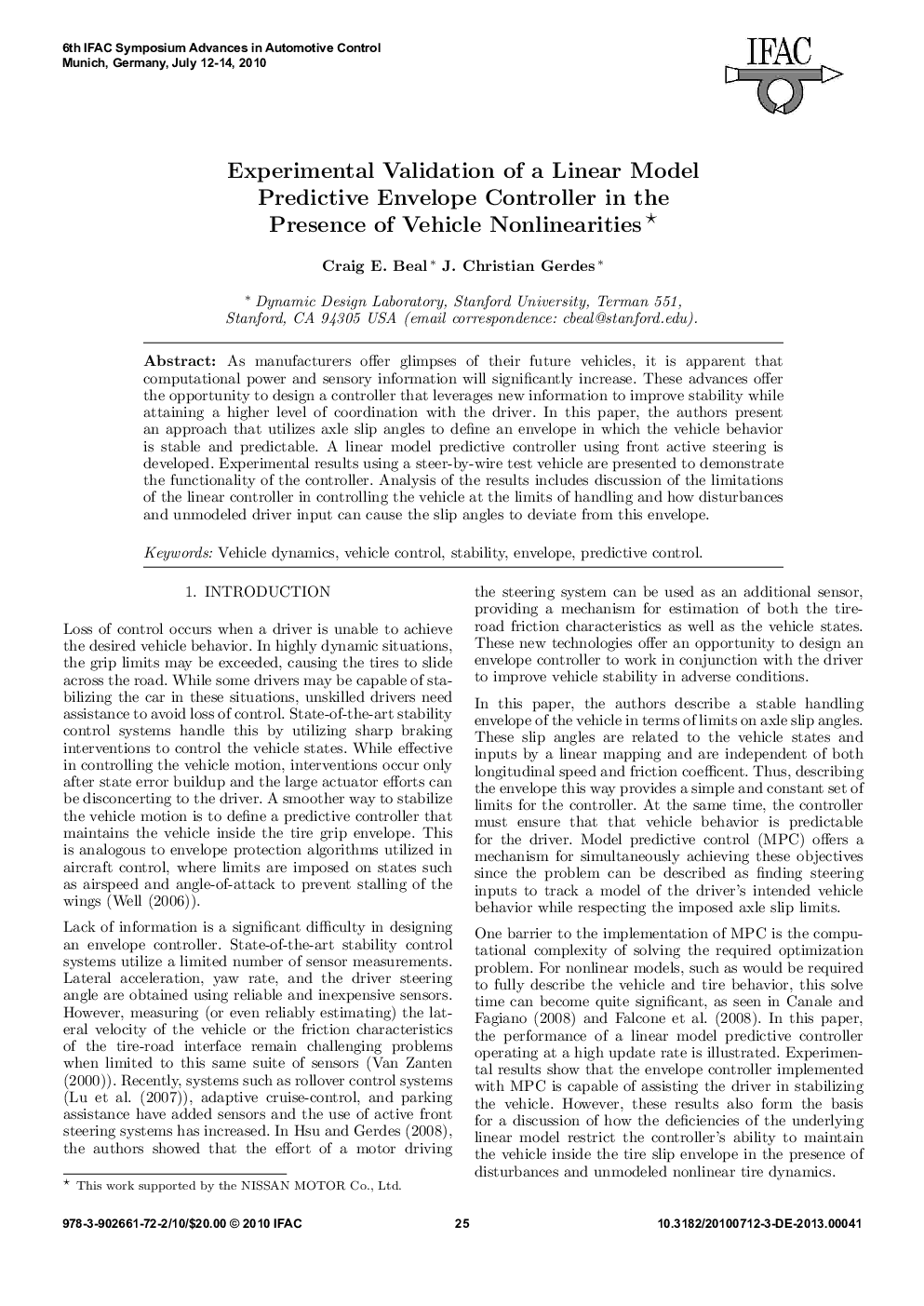| Article ID | Journal | Published Year | Pages | File Type |
|---|---|---|---|---|
| 719862 | IFAC Proceedings Volumes | 2010 | 6 Pages |
As manufacturers offer glimpses of their future vehicles, it is apparent that computational power and sensory information will significantly increase. These advances offer the opportunity to design a controller that leverages new information to improve stability while attaining a higher level of coordination with the driver. In this paper, the authors present an approach that utilizes axle slip angles to define an envelope in which the vehicle behavior is stable and predictable. A linear model predictive controller using front active steering is developed. Experimental results using a steer-by-wire test vehicle are presented to demonstrate the functionality of the controller. Analysis of the results includes discussion of the limitations of the linear controller in controlling the vehicle at the limits of handling and how disturbances and unmodeled driver input can cause the slip angles to deviate from this envelope.
